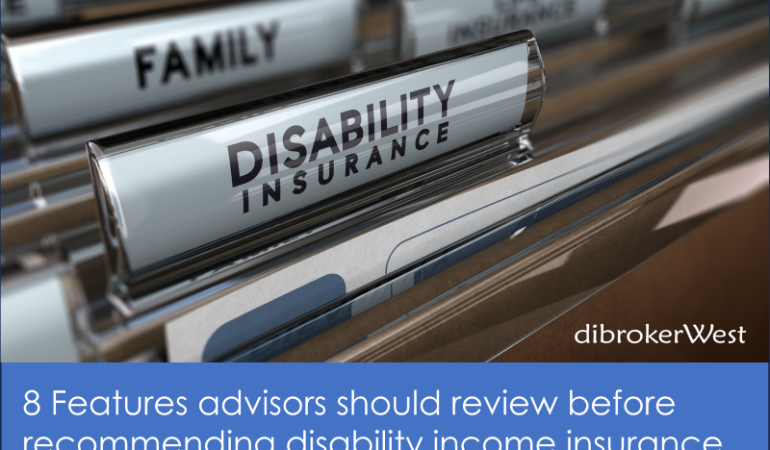
8 Features Advisors Should Review Before Recommending Disability Income Insurance
Selling disability income (DI) insurance is more than placing a policy—it’s protecting your client’s most valuable asset: their paycheck. Just like helping a client choose between “must-have” and “nice-to-have” features when buying a car, you need to guide them through which DI features will matter most for their financial security.
Understanding the Disability Insurance Marketplace
Not all disability insurance policies are created equal—and your clients are counting on you to cut through the noise.
- Social Security Disability Insurance (SSDI): A common misconception among clients is that SSDI will be enough. The reality? Monthly benefits are modest, approval rates are low, and eligibility is strict. It’s not a reliable solution for high-income earners or professionals.
- Employer Group DI Plans: These are often limited to 60% of income replacement (with caps), taxable benefits, and no portability if the client changes jobs. They also typically only pay on “total disability.” On the plus side, group coverage is easy to qualify for and sometimes subsidized.
- Association DI Plans: Sometimes tailored for specific professions, but still subject to caps and limited customization.
- Individual DI Policies: This is where you as an advisor can add the most value. Policies are customizable, portable, and designed to protect a higher percentage of income. They can stand alone or supplement group coverage to close the gaps.
The 8 Features Every Advisor Should Evaluate
- Definition of Disability
* Key question for clients: “When will this policy actually pay?”
* Recommend own-occupation (especially for doctors, dentists, or specialists) to protect against losing the ability to work in their trained specialty. For other clients, discuss whether “any-occupation” is sufficient. - Elimination Period (Waiting Period)
* Like a deductible in health insurance, but measured in time.
* Common choice: 90 days. Longer periods lower premiums but require a solid emergency fund. - Benefit Period
* How long benefits last. Options range from two years to age 65/67.
* Position this as: “Short benefit periods save money now, but long benefit periods protect your long-term lifestyle.” - Monthly Benefit Amount
* Individual DI won’t replace 100% of income, but combining group + individual can bring coverage closer.
* Run the math with your client: “How much income do we need to replace to keep your family financially stable?” - Exclusions & Limitations
* Critical to set expectations. Common exclusions: mental health claims, substance abuse, or pre-existing conditions.
* Advisors should highlight what isn’t covered to avoid surprises later. - Riders (Optional Add-Ons)
Examples:
* COLA Rider (benefits rise with inflation)
* Student Loan Rider (covers loan payments)
* Retirement Protection Rider (keeps retirement contributions on track)
* Residual/Partial Disability Rider (covers partial income loss)Tip: Present riders as a way to customize coverage to the client’s life stage.
- Future Increase Options (FIOs)
* Allows clients to increase coverage later without medical underwriting.
* A must-have for younger professionals with growing income potential. - Renewability Provisions
* Non-cancellable & guaranteed renewable: premiums locked in, no cancellations.
* Guaranteed renewable only: coverage continues, but premiums could rise for an entire class of insureds.
* Framing tip: “This is about stability. Do you want your rates guaranteed, or are you comfortable with potential increases?”
Positioning Advice for Advisors
Your job isn’t just to “sell a policy”—it’s to align coverage with your client’s financial goals. Here’s how to frame it:
- Income = Lifestyle: Remind clients that their income funds everything—mortgage, college savings, retirement plans, vacations. Losing it puts all those goals at risk.
- Health Crisis ≠ Financial Crisis: With the right DI features, clients can focus on recovery instead of bills.
- Customization Builds Trust: Walk through each feature, explain trade-offs, and position the policy as a tailored solution, not a one-size-fits-all product.
✅ Takeaway for Advisors: Review these eight features carefully with every DI recommendation. The right combination can mean the difference between a client who’s merely insured—and one who’s truly protected.
For more sales tips, please contact your Local Sales Rep.




